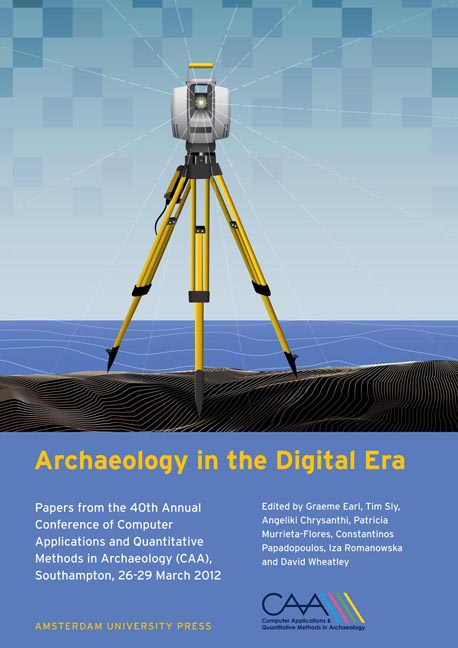 Archaeology in the Digital Era
Archaeology in the Digital Era GeoDia: or, Navigating Archaeological Time and Space in an American College Classroom
Published online by Cambridge University Press: 16 February 2021
Summary
Abstract:
GeoDia (http://geodia.laits.utexas.edu), a spatial timeline focusing on the archaeology of the ancient Mediterranean, is an attempt to use accessible, familiar online visualisation tools to help students understand synchronisms and material connections between cultures, while also serving as a study aid in support of the absorption of facts about time, space, and objects in the ancient world. Based on timemap. js, an open-source Javascript library that mashes up Google Maps and SIMILE timeline APIs, GeoDia provides an interactive interface that combines periodised archaeological sites, image resources, historical events, and attributes like culture and region. This paper presents the theoretical considerations involved in the creation of the structure of GeoDia and reviews survey data from several hundred students who have used GeoDia either during beta-testing or in the course of formal class assignments. It also addresses linked data issues and the reusability of the dataset independent of the interface.
Keywords:
Geotemporal Visualisation, Pedagogy, Periodisation
Introduction
There is an inherent tension in archaeology between the complexity, uncertainty, and incompleteness of the evidence and the relatively clear and simple narratives that present the results of archaeological research to the public. This tension has been exacerbated by digital approaches to archaeology: on one side, field researchers struggle to represent and share complex datasets and the processes that generated them for the benefit of other researchers, while on the other, three-dimensional reconstructions and museum websites elide complexity and process to present a seamless, coherent vision of the past for the benefit of lay audiences. The archaeological computing community should see as one of its “grand challenges” the use of digital tools to help students and the public understand the imperfect and complicated process of interpretation that connects archaeological evidence to the stories we tell about the past.
These issues are relevant to the way many of us present archaeology in university classrooms, especially in terms of the spatial and temporal aspects of material culture. Archaeologists are well aware of the multiplicity of terms and concepts that are used to group material remains into chronological periods or geographic units and of the way in which space and time interact in these classifications.
- Type
- Chapter
- Information
- Archaeology in the Digital EraPapers from the 40th Annual Conference of Computer Applications and Quantitative Methods in Archaeology (CAA), Southampton, 26-29 March 2012, pp. 259 - 268Publisher: Amsterdam University PressPrint publication year: 2014
